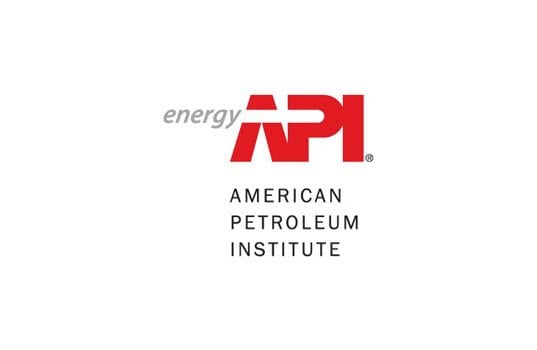The American Petroleum Institute released its industry outlook for the second quarter of 2018. The report shows the strength of global economic growth and how that has translated into record oil, natural gas and petrochemical demand.
“World oil demand has approached 100 million barrels per day (MBD) for the first time, and U.S. supply growth has been up to the challenge, meeting virtually all global oil demand growth so far in 2018,” said API Chief Economist Dean Foreman.
Strong global economic growth has resulted in record oil demand. As of May, U.S. petroleum supply has risen by more than 2.0 MBD from the same month last year, and recent drilling activity increases continue to position the U.S. for further supply gains this year.
The report also addresses key uncertainties for the economy and energy markets:
- Bloomberg consensus for slower economic growth over the next two years.
- IMF warnings about rising inflation, interest rates and potential financial market volatility.
- Energy Information Administration (EIA) expectations that the global oil supply/demand balance could shift back to a surplus position beginning in Q2 2018.
Separately, the latest API Monthly Statistical Report (MSR) shows U.S. crude oil production reached a new all-time high in May with10.6 MBD. Total U.S supply last month, including natural gas liquids (NGLs) and other liquid fuels, was up by more than 2.0 MBD from a year ago. The strong U.S. supply helped meet growing petroleum demand. U.S. refineries operated at their highest average capacity utilization rate (91.4 percent) since 2003. Despite higher prices in 2018, U.S. gasoline demand has remained solid. Consumer gasoline demand year-to-date through May was the highest on record since 1945 (9.1 MBD).
“Strong demand means U.S. consumers and businesses have thrived with solid employment conditions and wage growth,” said Foreman. “Americans care about energy prices, which affect their pocketbooks, livelihoods and security. Every barrel produced at home adds to the global oil supply, whether it is consumed here or abroad. And domestic oil prices have remained lower than international ones as a result. The more we add, that improves our chances are of putting downward pressure on prices at the pump.”
May highlights:
- Motor gasoline demand for first five months of 2018 became the highest on record.
- Jet fuel demand growth accelerated to its strongest May ever.
- Residual fuel oil rose along with shipping.
- The U.S. petroleum trade balance year-to-date was at its lowest in more than 50 years.
- Record refinery throughput through the first five months of the year.
For more information on the monthly reports, please visit our Energy Tomorrow blog and API website, where the reports are now available to view and share and please see detailed analysis of API’s Industry Outlook here.








